1750 cone crusher is a kind of spring cone crusher. It is named after its crushing cone diameter is 1750mm. The 1750 cone crusher has three types: standard type, long head type, and short head type according to different cavity types, which are recorded as PYB1750 cone crusher, PYZ1750 cone crusher and PYD1750 cone crusher respectively.
Cone cruser 1750 Technical Parameters:
Cone crusher PYB1750 maximum feed particle size: 215mm, Discharge port adjustable range: 25-60mm, Capacity: 280-480t/h, Motor power: 160kw, Weight: 50.3t
Cone crusher PYZ1750 maximum feed particle size: 185mm, Discharge port adjustable range: 10-30mm, Capacity: 115-320t/h, Motor power: 160kw, Weight: 50.3t;
Cone crusher pyd1750 maximum feed particle size: 85mm, Discharge port adjustable range: 5-15mm, Capacity: 75-230t/h, Motor power: 160kw, Weight: 50.4t;
Different models of cone crushers 1750 have different prices based on their performance differences. Moreover, the prices of different manufacturers are also different. Generally, manufacturers that specialize in the production of cone crushers are more cost-effective.
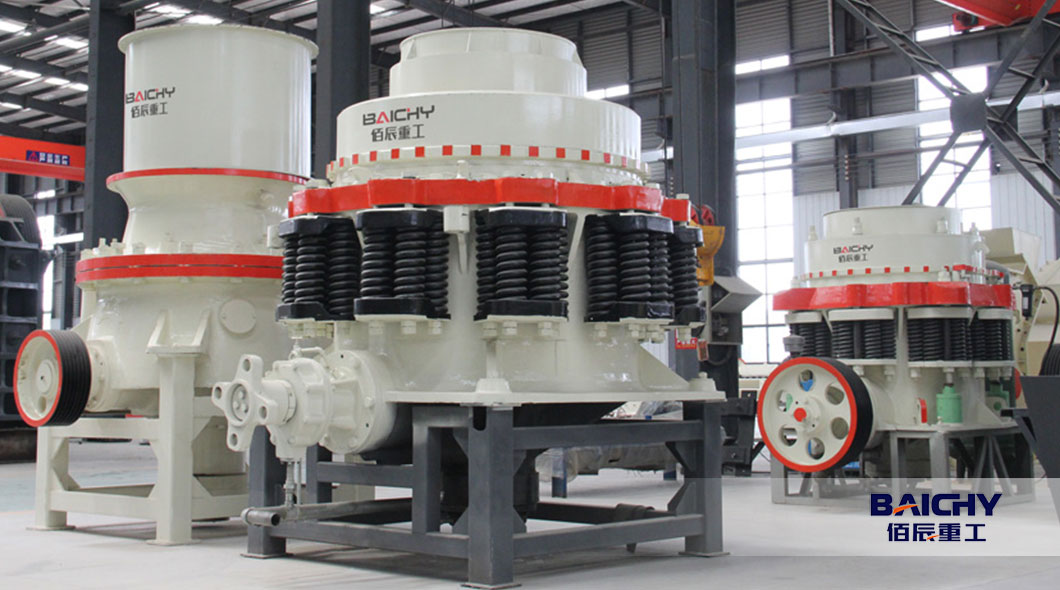
Spring cone crusher working principle:
When the PYB1750 cone crusher is working, the motor drives the large bevel gear at the bottom of the eccentric sleeve through the hydraulic coupling and the small bevel gear, causing the eccentric sleeve to rotate, causing the cone to rotate and swing to crush the material. The main shaft of the crusher does not move, it only supports the spherical tiles and bears the crushing force. Since the main shaft of the crusher does not move and the eccentric sleeve transmits the crushing force, the structure can withstand a large crushing force and is very suitable for fine crushing and ultra-fine crushing, because the crushing force of ultra-fine crushing is very large.
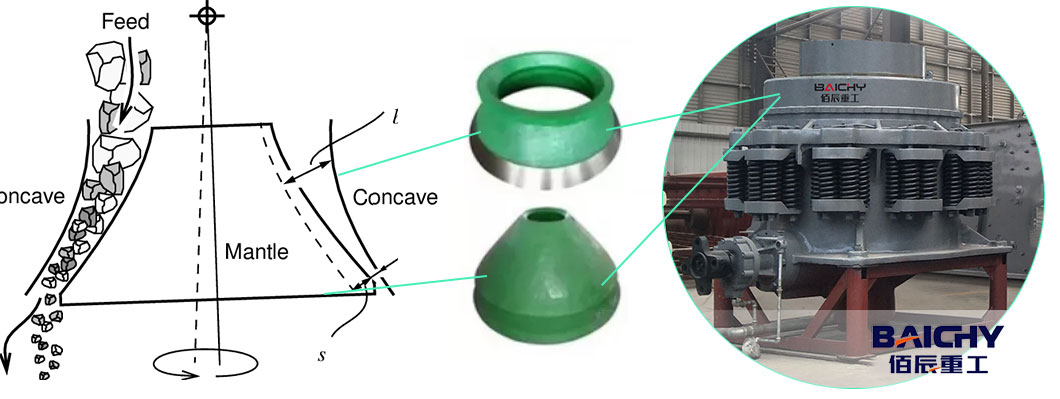
Spring Cone crusher Features:
1. The moving cone rotates continuously, and the material crushing process and discharging process are alternately and continuously carried out along the working surface, with high productivity;
2. The material is sandwiched between two cones and is subject to extrusion, bending and shearing. It is easier to break and consumes less power;
3. The product has a relatively uniform material content and a cubic shape, and the working surface of the moving cone is also relatively evenly worn;
4. Structure introduction. The structure of the cone crusher mainly consists of a frame, a horizontal shaft, a moving cone, a balance wheel, an eccentric sleeve, an upper crushing wall (fixed cone), a lower crushing wall (moving cone), a spring system, a control system, etc. Composed of several parts;
5. The movable cone and the fixed cone are both upright. When the movable cone swings, there is a parallel gap between the movable cone and the fixed cone near the discharge port of the crushing chamber to make the finished product uniform. The feed port is small in size and can handle materials that have been crushed for the first time;
6. This series of cone crushers adopts dry oil or water sealing methods to prevent dust and impurities from entering the body, thus ensuring the cleanliness of the lubricating oil, extending the service life of the sliding bearings and thrust ball bearings, and making the machine run reliably.
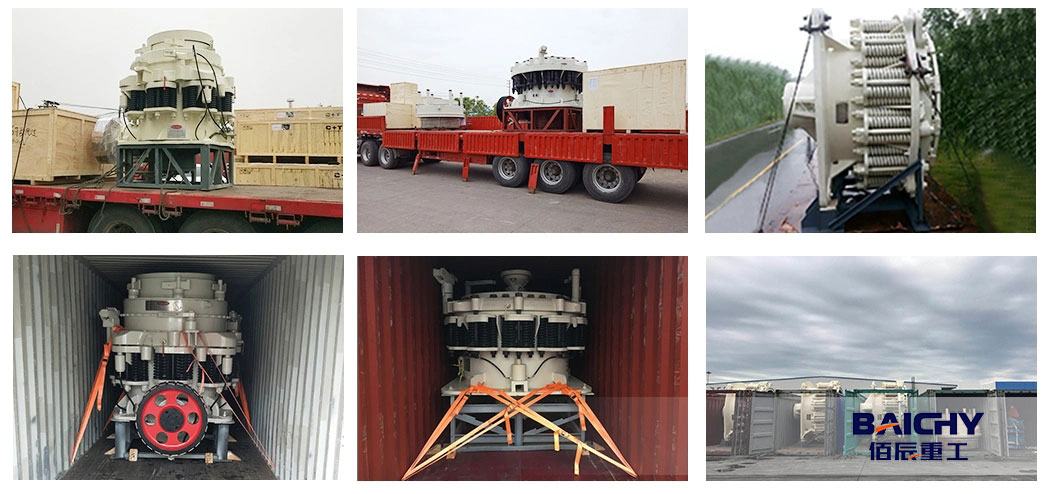
Cone crusher advantage and disadvantage
Advantage
The advantage of the PYB1750 cone crusher is that it is mainly used for medium and fine crushing of ores with various hardnesses. Its crushing cone has a high number of swings and a large swing stroke, so the ore in the crushing chamber is quickly impacted by a large stroke, and because there is a parallel crushing area of a certain length at the lower part of the crushing chamber, it can ensure The ore is crushed at least once in the parallel zone. Therefore, this cone crusher has the advantages of large crushing ratio, high output, low power consumption, uniform product particle size, and is suitable for crushing various hardness ores. Therefore, this kind of crusher is widely used
Disadvantages
The disadvantages of PYB1750 cone crusher are
1. Unreliable safety device and difficulty in clearing the cavity. When it is stuck and stopped, the crushing cavity is filled with ore. The funnel needs to be partially dismantled and the ore must be cleaned manually. If there is stuck iron, it needs to be cut off with a cutting gun, which will not only affect normal driving but also increase the number of workers. labor intensity.
2. The maintenance cycle is long and there are many spare parts. The main wearing parts of this cone crusher are the movable cone lining plate and the fixed cone lining plate. Due to the complicated disassembly and assembly process, and the troublesome pouring of the zinc alloy filling material used, a set of adjusting ring devices and spindles must be spared. device.
3. The dust-proof device is unreasonable. Since dust-proof water pipes are easily clogged, a large amount of dust enters the oil station, and the lubricating oil is seriously polluted. The lubricating oil is usually replaced every three months. The contaminated lubricating oil often causes damage to the oil pump.
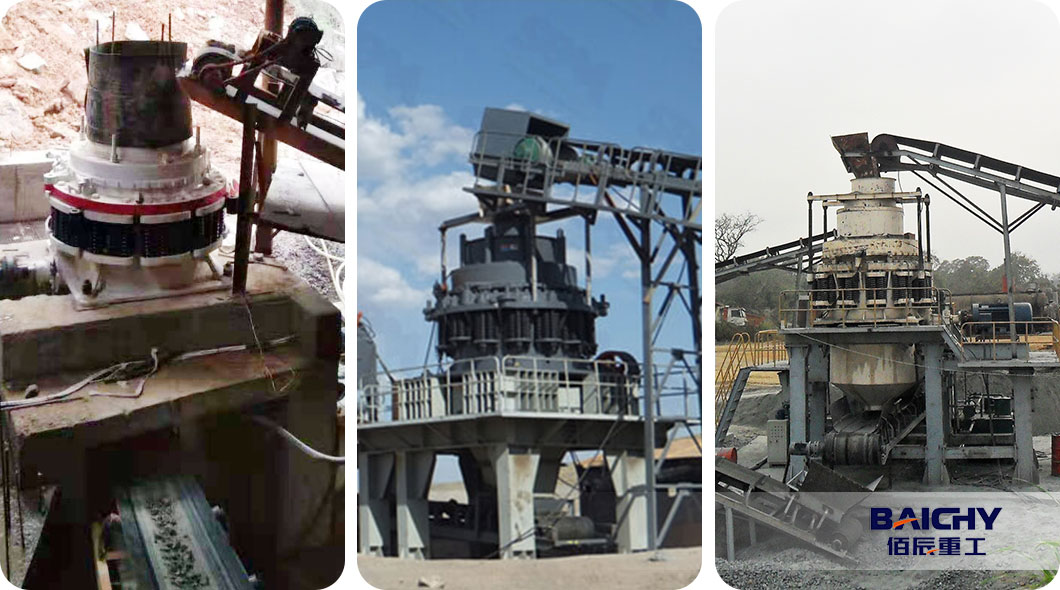
Precautions when use cone crusher:
1. Select the appropriate crushing cavity capacity and appropriate feeding particle size ratio;
2. Whether the materials are evenly distributed after entering the crushing cavity;
3. Keep the discharge port open;
4. Materials containing sticky substances will reduce overall production efficiency;
5. The discharge volume of the crusher should be consistent with the conveying volume of the belt conveyor;
6. It is recommended that the power recommended by the manufacturer can be used during the process.
People Also Frequently Asked For-FAQ
What is spring cone crusher?
Published Sep 26, 2023. A spring cone crusher is a type of cone crusher that utilizes a spring mechanism to reduce the size of large rocks and ores into smaller particles. These crushers are commonly used in the mining and aggregate industries for secondary and tertiary crushing applications.
What is the purpose of a cone crusher?
Cone crushers are popular rock crushing machines in aggregates production, mining operations, and recycling applications. They are normally used in secondary, tertiary, and quaternary crushing stages
The main difference between an impact crusher and a cone crusher is that an impact crusher uses impact force to crush material, while a cone crusher uses pressure to crush material. Impact crushers typically use high-speed rotating hammers to crush material, while cone crushers use a spinning conical head.2
What are the disadvantages of cone crushers?
However, they have some disadvantages, such as a higher initial cost, complex maintenance, limited feed size, and a fixed discharge opening. The choice to use a cone crusher should consider the specific needs of the application and whether its advantages align with the requirements.









 2025-04-14
2025-04-14

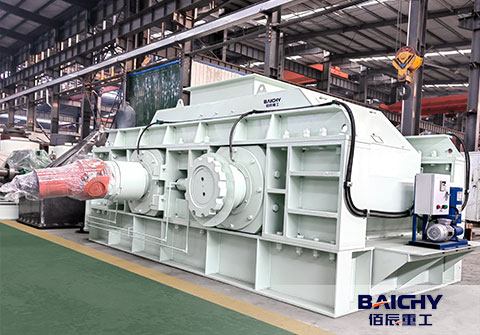
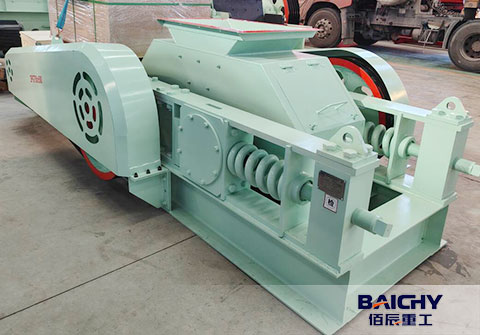

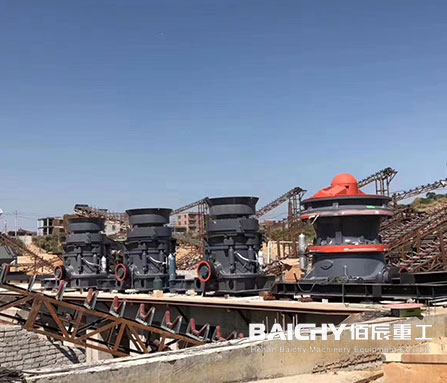
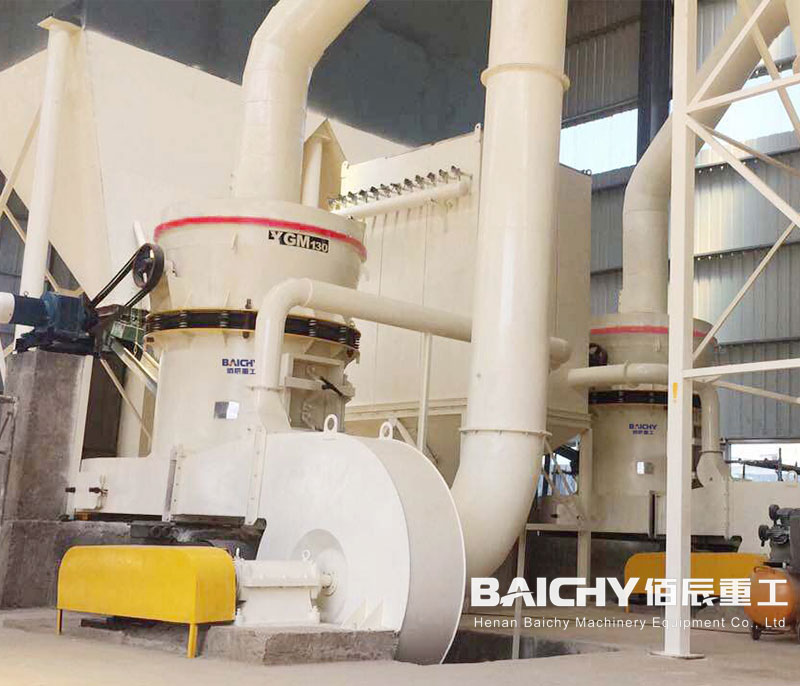
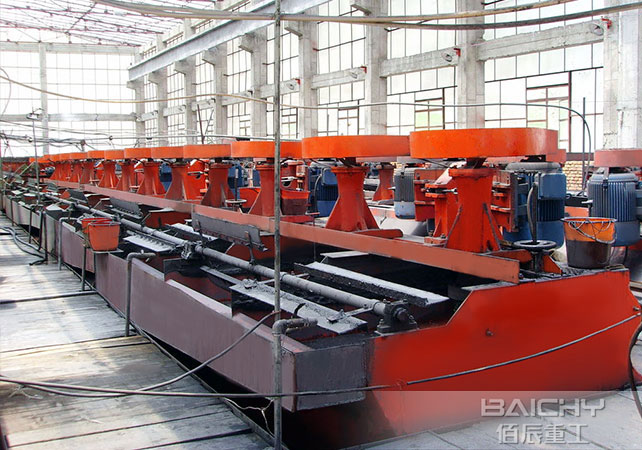














 86-15093113821
86-15093113821
 86-15093113821
86-15093113821

